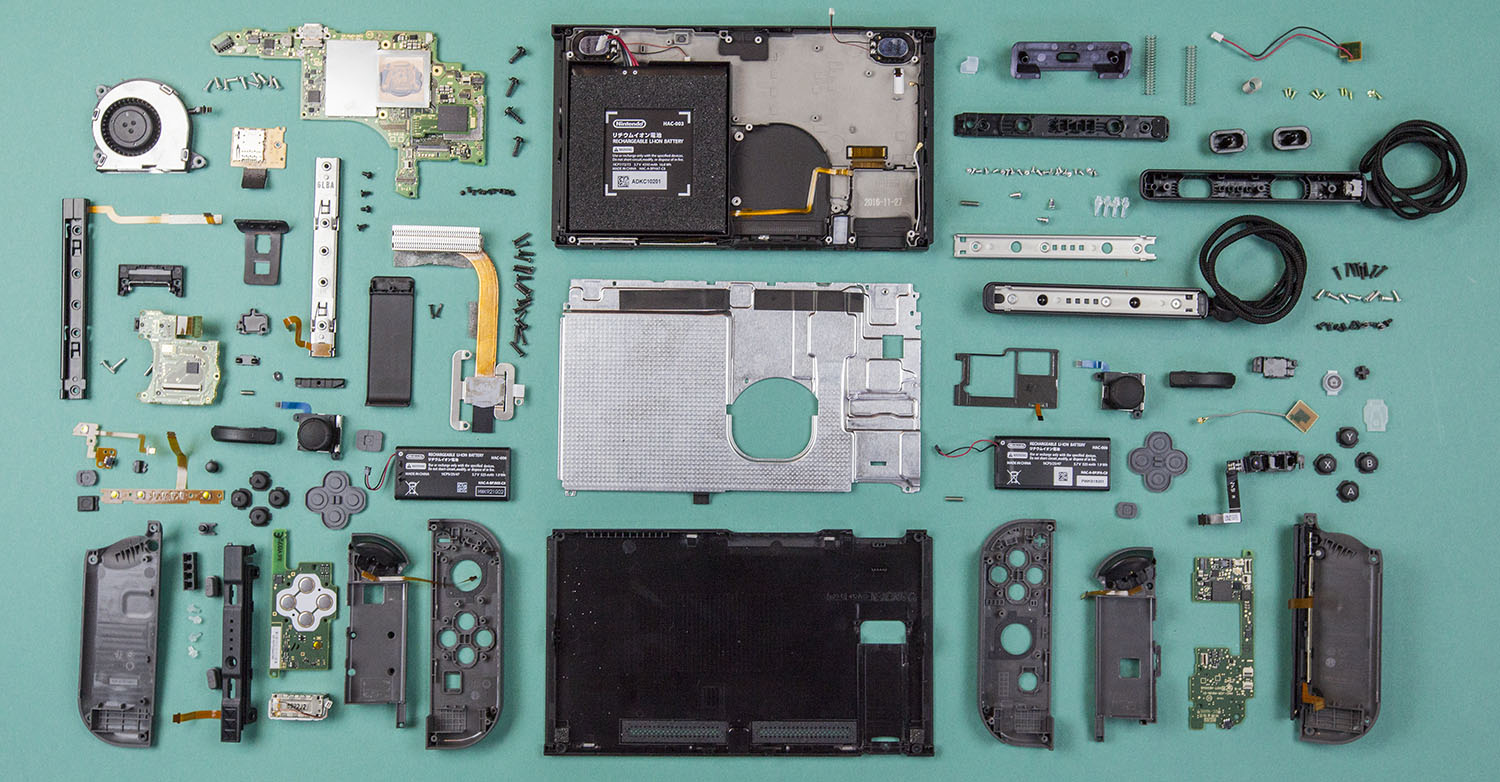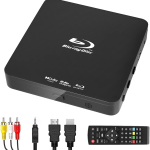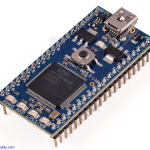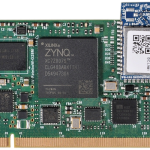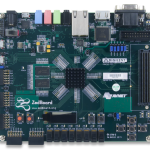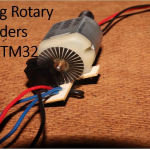Have you ever delved into the world of Nintendo Switch internals? At the heart of this innovative gaming console technology lies the formidable Nvidia Tegra X1 chip. If you dig even deeper, you’ll discover that this powerhouse is composed of four ARM Cortex A57 CPU cores, which occupy a mere two square millimeters on the silicon die. The entire processor cluster, along with its cache memory, spans just over 13 square millimeters, showcasing an impressive efficiency in design and engineering. While Nintendo has opted not to utilize the Tegra X1’s additional four energy-efficient A53 cores, the Switch’s internal architecture still offers a compelling look at modern console capabilities.
Exploring the inner workings of the Nintendo Switch reveals fascinating insights into its architecture. The console employs the Nvidia Tegra X1, a chip that includes four powerful ARM Cortex A57 cores, cleverly designed to balance performance with energy consumption. This compact design means the core cluster, along with necessary cache memory, is surprisingly small yet highly effective. Equipped with advanced features typical of contemporary gaming systems, the Nintendo Switch exemplifies the evolution of gaming console technology. The highly optimized DRAM and sophisticated processing capabilities demonstrate just how far we have come in the realm of entertainment hardware.
Exploring the Nintendo Switch Internals: A Closer Look at the Nvidia Tegra X1
The heart of the Nintendo Switch lies within its Nvidia Tegra X1 chip, a powerful yet compact processor designed for mobile gaming. This chipset incorporates a total of eight CPU cores, comprised of four ARM Cortex A57 cores that are critical for handling gaming tasks effectively. Each Cortex A57 core consumes roughly two square millimeters of die space, highlighting the impressive engineering behind this unit. Unlike many other gaming systems which can be bulky and complex, the Switch’s combination of performance and efficiency places it as a revolutionary device in gaming console technology.
The Tegra X1 is known not only for its computing power but also for its energy efficiency, making it perfectly suited for a handheld device. In addition to the Cortex A57 cores, the processor also features four ARM Cortex A53 cores, though Nintendo has opted not to utilize these more power-efficient cores in their current games. This combination allows the Switch to manage high-performance draw, maintaining a balance between gaming intensity and battery conservation for longer play sessions.
Understanding the ARM Cortex A57 Cores in the Nintendo Switch
The ARM Cortex A57 cores found within the Nintendo Switch are an integral part of its architecture, providing a robust performance landscape while engaging in complex gaming tasks. These cores are designed for high-performance computing and are known for their advanced out-of-order execution capabilities, allowing for enhanced multitasking and processing efficiency. This trait is especially beneficial in gaming scenarios where multiple processes must run simultaneously without lag.
Despite their capabilities, it’s noted by experts that the Switch’s architecture, while impressive, may not match up to more contemporary desktop CPUs. This observation illustrates the rapid advancements in technology since the Switch’s launch. Nevertheless, the Cortex A57’s contribution to the gaming console technology of the Switch represents a significant step forward in mobile gaming, providing players with the power needed to support demanding gameplay and immersive experiences.
The Role of Memory in the Performance of Nintendo Switch
Memory plays a crucial role in the overall performance of the Nintendo Switch, chiefly thanks to its 4 GB of LPDDR4 DRAM. This type of memory is designed to offer a theoretical bandwidth of 25.6 GB/s, which facilitates swift data processing and enhances the gaming experience by reducing load times and allowing smoother transitions. The efficient memory management within the Switch allows developers to create more realistic and expansive game worlds without sacrificing performance.
Moreover, the integration of such high-speed memory in combination with the Tegra X1 chip exemplifies the level of technology that has become standard in modern gaming consoles. The Switch’s capacity to handle demanding applications through its optimized memory architecture highlights why it remains a preferred choice for gamers seeking a seamless and engaging experience, even against the backdrop of other powerful gaming systems.
Comparing Gaming Console Technologies: Switch vs. Desktop CPUs
When comparing the Nintendo Switch to traditional desktop CPUs, it becomes evident that the former operates on a distinctive set of technologies tailored for portability and efficiency. While desktops can utilize more powerful components and cooling systems, the Switch manages to deliver impressive performance through its Nvidia Tegra X1 chip, which is engineered specifically for on-the-go play. This leads to a differing gaming experience, one that prioritizes user convenience without significantly compromising on performance.
While the Switch’s processor can often be perceived as underwhelming, particularly when stacked against the capabilities of even older desktop CPUs, it nonetheless offers an exceptional mobile gaming experience. As the gaming industry continues to evolve, devices like the Switch provide a glimpse into the future, where efficiency and portability become more essential characteristics alongside raw power.
Out-of-Order Execution: Boosting Nintendo Switch Performance
Out-of-order execution is a pivotal feature integrated into the Nintendo Switch’s Nvidia Tegra X1 processor, allowing the gaming console to enhance performance significantly. This technique enables the CPU to process instructions as resources become available rather than strictly adhering to their original order. This adaptability greatly reduces bottleneck scenarios that might occur during intense gaming sessions, facilitating smoother gameplay and quicker response times.
The execution model not only improves efficiency but also optimizes thermal performance, which is particularly crucial in a handheld device like the Switch. By utilizing out-of-order execution, developers can leverage the full power of the ARM Cortex A57 cores, ensuring that players enjoy a rich gaming experience while maintaining manageable power consumption levels.
The Significance of Chip Architecture in Gaming Consoles
The chip architecture of a gaming console like the Nintendo Switch is foundational to its overall functionality and gaming capabilities. This architecture comprises various elements, including the CPU cores, memory, and graphics processing units that work collectively to deliver a comprehensive gaming experience. The thoughtful arrangement of these elements within the Nvidia Tegra X1 has allowed Nintendo to balance performance and battery life, a feat that has become increasingly sought after in modern gaming technology.
A deep understanding of chip architecture not only benefits developers in optimizing games tailored for such systems but also aids consumers in making informed choices regarding device upgrades. As the standards for chip design continue to advance, so too does the user experience in gaming, setting new benchmarks for future consoles and handheld devices alike.
Future Trends in Console Technology and Architecture
Looking ahead, the future trends in console technology hint at an increase in processing power and efficiency, building on the foundations laid by current devices like the Nintendo Switch. As gaming requirements evolve, we can anticipate more sophisticated architectures capable of handling demands from highly immersive graphics to complex computational tasks. The lessons learned from the design of the Tegra X1 and its ARM Cortex cores will likely inform these advancements.
Increased integration of AI and machine learning technologies into the chip architecture could also revolutionize console gaming, offering personalized experiences and smarter game interactions. As the industry embraces these innovations, the path for future consoles will undoubtedly be paved by the ongoing evolution of chip technologies and architecture that prioritize user experience alongside performance.
Getting Started with ARM Assembly Programming for the Nintendo Switch
For those interested in harnessing the power of the ARM architecture utilized in the Nintendo Switch, learning ARM assembly programming is an essential skill. Assembly language allows programmers to operate closely with the hardware, granting them the ability to optimize software performance significantly. This low-level programming skill can help developers ensure that their games run efficiently on the Switch’s unique hardware configuration.
To kickstart your journey into ARM assembly programming, various resources are available that detail not only the core principles of the language but also practical examples tailored for the Tegra X1 environment. With tools and guides that support beginners, it’s now possible to explore the potential of programming directly for the Nintendo Switch, and bring your creative gaming ideas to life.
The Impact of the Nintendo Switch on Modern Gaming Culture
The launch of the Nintendo Switch marked a turning point in modern gaming culture, introducing a blend of portable and home-console gameplay that resonated with a wide demographic of gamers. Its unique architecture, designed with an emphasis on versatility and performance within a compact form, has drastically influenced how we view console gaming. Players can engage in their favorite titles anywhere, thanks to its performance capabilities driven by the Nvidia Tegra X1.
Moreover, the Switch has fostered a sense of community among players who appreciate both the nostalgia of classic Nintendo titles and the innovation of new releases. The gaming landscape has expanded, with the Switch becoming a cornerstone for social gaming and shared experiences, which reflects a broader trend where technology enhances social interaction in entertainment.
Frequently Asked Questions
What is the architecture of the Nintendo Switch internals?
The Nintendo Switch architecture is primarily based on the Nvidia Tegra X1 chip, which features a combination of ARM Cortex A57 CPU cores. This innovative architecture allows the Switch to perform efficiently as a handheld gaming console, leveraging modern gaming console technology.
How many CPU cores does the Nintendo Switch have?
The Nintendo Switch internals include a total of eight CPU cores, comprising four ARM Cortex A57 cores optimized for performance and four ARM A53 cores that are more power efficient but are not utilized by Nintendo in their software.
What is the role of the Nvidia Tegra X1 in the Nintendo Switch?
The Nvidia Tegra X1 serves as the central processing unit (CPU) of the Nintendo Switch, combining powerful ARM CPU cores within a compact architecture that enhances gaming performance while maintaining energy efficiency.
What is the significance of the ARM Cortex A57 in Nintendo Switch internals?
ARM Cortex A57 cores within the Nintendo Switch internals are crucial for delivering high processing power. These cores facilitate out-of-order execution and branch prediction, which significantly enhance the gaming experience on the console.
How much memory does the Nintendo Switch have, and what type is it?
The Nintendo Switch features 4 GB of LPDDR4 DRAM memory. This type of memory allows for a theoretical bandwidth of 25.6 GB/s, crucial for handling the data demands of modern gaming technologies.
Why does Nintendo not utilize the ARM A53 cores in the Switch architecture?
While the Nintendo Switch architecture includes ARM A53 cores, Nintendo has opted not to utilize them, likely prioritizing the performance benefits of the more powerful ARM Cortex A57 cores to enhance gaming experiences.
Can you explain out-of-order execution in relation to Nintendo Switch internals?
Out-of-order execution in the Nintendo Switch internals allows the CPU to process instructions non-sequentially, increasing efficiency and performance by maximizing the usage of CPU resources and reducing idle time.
How does the performance of the Switch’s Nvidia Tegra X1 compare to modern desktop CPUs?
Despite its advanced features, the Nvidia Tegra X1 in the Nintendo Switch is considered underwhelming compared to modern desktop CPUs, as it was designed for power efficiency rather than raw computational power.
| Component | Details |
|---|---|
| Processor | Nvidia Tegra X1 with Cortex A57 and A53 cores |
| Cortex A57 Cores | 4 ARM CPU cores, occupying 2 mm² on the die, part of a 13 mm² cluster with cache memory |
| A53 Cores | 4 ARM CPU cores that are power-efficient but not utilized by Nintendo |
| Memory | 4 GB LPDDR4 DRAM with a theoretical bandwidth of 25.6 GB/s |
| Performance Features | Supports out-of-order execution and branch prediction to enhance performance |
| Comparative Remarks | Compared to desktop CPUs, the Switch processor is considered underwhelming today |
Summary
Nintendo Switch internals showcase an impressive architecture for a gaming console, particularly with its use of the Nvidia Tegra X1 chip that includes both Cortex A57 and A53 cores. The advanced features like out-of-order execution and the generous 4 GB of LPDDR4 DRAM provide a glimpse into the technological evolution of compact computing devices. Although it may not stand up to the prowess of modern desktop CPUs, the Nintendo Switch’s design and capability reflect a remarkable leap in processing power for portable gaming.

